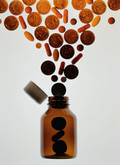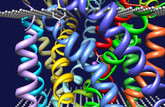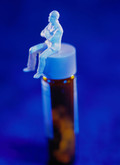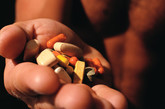Reports
US market trends in oncology/nephrology supportive care and inflammation biosimilars
This article provides an overview of the biosimilars currently available in oncology supportive care, nephrology/oncology supportive care and inflammation in the US.
US biosimilars trends in oncology therapeutics
The Biosimilars Trend Report published in 2020 describes the landscape for biosimilars in the US. The current biosimilars available for oncology therapeutics are trastuzumab, bevacizumab and rituximab. Overall, biologicals make up approximately half of all oncology products and they are expensive due to higher development and production costs. Biosimilars offer an opportunity to reduce the cost of oncology treatments. As of July 2020, 12 oncology biosimilars were available in the US.
The US biosimilars market in 2020
The 2020 Biosimilars Trend Report opens by stating that the US marketplace is ready to welcome many new biosimilars in 2020 and the years to come [1]. Recent US regulations have levelled the playing field for biosimilars and reference products. For example, the Centers for Medicare and Medicaid Services (CMS) has made changes to the US reimbursement system which has established a Healthcare Common Procedure Coding System (HCPCS) and payment rates for biosimilars. Such changes are hoped to foster competition and create a more sustainable marketplace.
Biosimilars trend report 2020
The seventh edition of the Biosimilars Trend Report 2020 has been published. This 2020 report was developed based on input from members of the healthcare community in the US [1].
Smart healthcare spending and the Falsified Medicines Directive in Europe
The European Federation of Pharmaceutical Industries and Associations (EFPIA) has issued a white paper on ‘Strengthening health systems through smart spending’ and a ‘Benefits beyond the EU Falsified Medicines Directive - The hospital setting’ report.
Challenges faced by biosimilar orphan drugs in European health systems
As treatments for rare diseases become a greater healthcare priority, the contribution of biosimilars as a means of reducing costs and increasing patient access will become more important for the long-term sustainability of health systems [1]. While the current impact of non-orphan biosimilars suggests this contribution could be significant, uptake of biosimilars across Europe remains variable and there is a risk that sustainable competitive markets are not yet established. A recent review of biosimilar policies in Europe found that key principles for a sustainable biosimilar market include supporting innovation, physician prescribing freedom, and allowing for multiple suppliers [2].
Commercialization challenges for biosimilar orphan drugs
Companies seeking to commercialize orphan drug biosimilars are likely to face challenges associated with limited potential market size, uncertainty regarding expanding patient access and loyalty to the reference product.
Clinical development challenges faced by orphan drug biosimilar developers
Biosimilar development is more costly and requires greater effort to conduct analytical and clinical testing than generic drug development. These challenges can be amplified when developing a biosimilar of an orphan drug.
The landscape for orphan drugs in Europe
The discovery and development of medical products for the prevention, diagnosis and treatment of rare diseases has been a public health priority in Europe for several decades [1]. Rare diseases in this context are defined as chronically debilitating or life-threatening conditions that affect fewer than five in 10,000 people within a given community, or diseases which are unlikely to generate a sufficient return on investment for developers without incentives.
Generics and biosimilars can save Ireland Euros 1 billion in five years
Medicines for Ireland (MFI) launched their ‘Reductions in the Cost of Medicines – Ireland’s Patients First 2020–2022’ report on 29 September 2020. This report outlines how additional savings of up to Euros 1 billion in the next five years can be achieved through increased use of generics and biosimilars.













